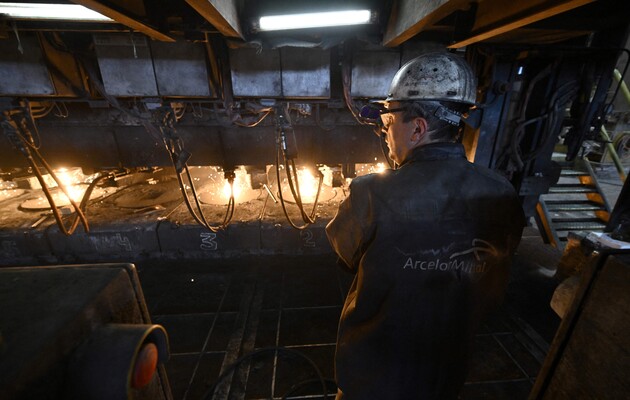The war put Ukrainian metallurgy on the verge of survival. On the one hand, the industry suffered irreparable losses in Mariupol, where two leading metallurgical plants were located. On the other hand, the enterprises of the industry experience difficulties with the supply of raw materials, a decrease in demand, and blocking of export routes. Enterprises that manufacture metal or metal products (hereinafter simply metallurgy) mostly found themselves in a deep crisis, regardless of size and geographical location.
Metallurgists themselves pessimistically assess their current situation and business environment, continuing to cut production and exports. These are the main results of the sixth new monthly business survey conducted by the Institute for Economic Research and Policy Consultation (IED) in October 2022.
The industry is losing its role as a breadwinner exporter
Before the war, the metallurgical industry was one of the breadwinners of the Ukrainian economy. However, Russian aggression not only caused irreparable damage to production, but also blocked traditional export routes. Most of the industry’s products went abroad through sea ports, which today are only available for Ukrainian grain.
As a result, as of October, every third company in the industry (33% of respondents) stopped exporting altogether. In October, 36% of enterprises also reduced export volumes, 55% did not change them, and only 9% were able to increase them compared to September. Also, representatives of metallurgy are skeptical about the restoration of export volumes in the near future. If until September the share of optimists outweighed the share of pessimists, then already in October the situation changed dramatically. 40% of enterprises expect a decrease in export volumes, and only 10% expect an increase.
Trade statistics, which are available despite wartime restrictions, fully confirm the export crisis in steel. For the nine months of 2022, the export of base metals and products from them amounted to 5.1 billion dollars. USA, which is more than half less than in the corresponding period last year. Yes, the industry as a whole provided 15% of the total volume of exports (it was 23.5% based on the results of the entire year 2021), but almost half of this volume falls on the pre-war January-February period.
7% of enterprises in the industry expect an increase in production. More and more often, metallurgical enterprises report a reduction in stocks of raw materials and materials (40% of respondents). The number of new orders is also decreasing (40% of respondents). In addition, 24% of enterprises in the industry increased the number of employees on forced vacations, which is the highest indicator among the entire industry.
Yes, ordinary Ukrainians are unlikely to quickly notice the metallurgical crisis, after all, these enterprises do not produce consumer goods. But indirectly, metallurgical problems will affect everyone: a reduction in exports and foreign exchange earnings will lead to a drop in the hryvnia exchange rate; the loss of jobs will increase the number of Ukrainians on the verge of survival; the shortage of domestically produced metal will increase the prices of construction works and equipment, which the country will need so much during the reconstruction of the infrastructure.
What’s worse, experts in the field currently do not even dream of returning to pre-war indicators – this task is too difficult and expensive, practically it will be necessary to start from scratch. So already now the country should think about how to rebuild the industry, on what principles, what leading technologies we lack, how to improve logistics routes, how to move from raw materials to the production of parts, after all, which parts are currently in demand by the domestic and world markets. Currently, Japan is the third largest producer of steel and steel products in the world. The island nation, which has never even had significant ore deposits, has proven that technology is more important than resources in today’s markets. And this experience would be very useful for Ukraine.













